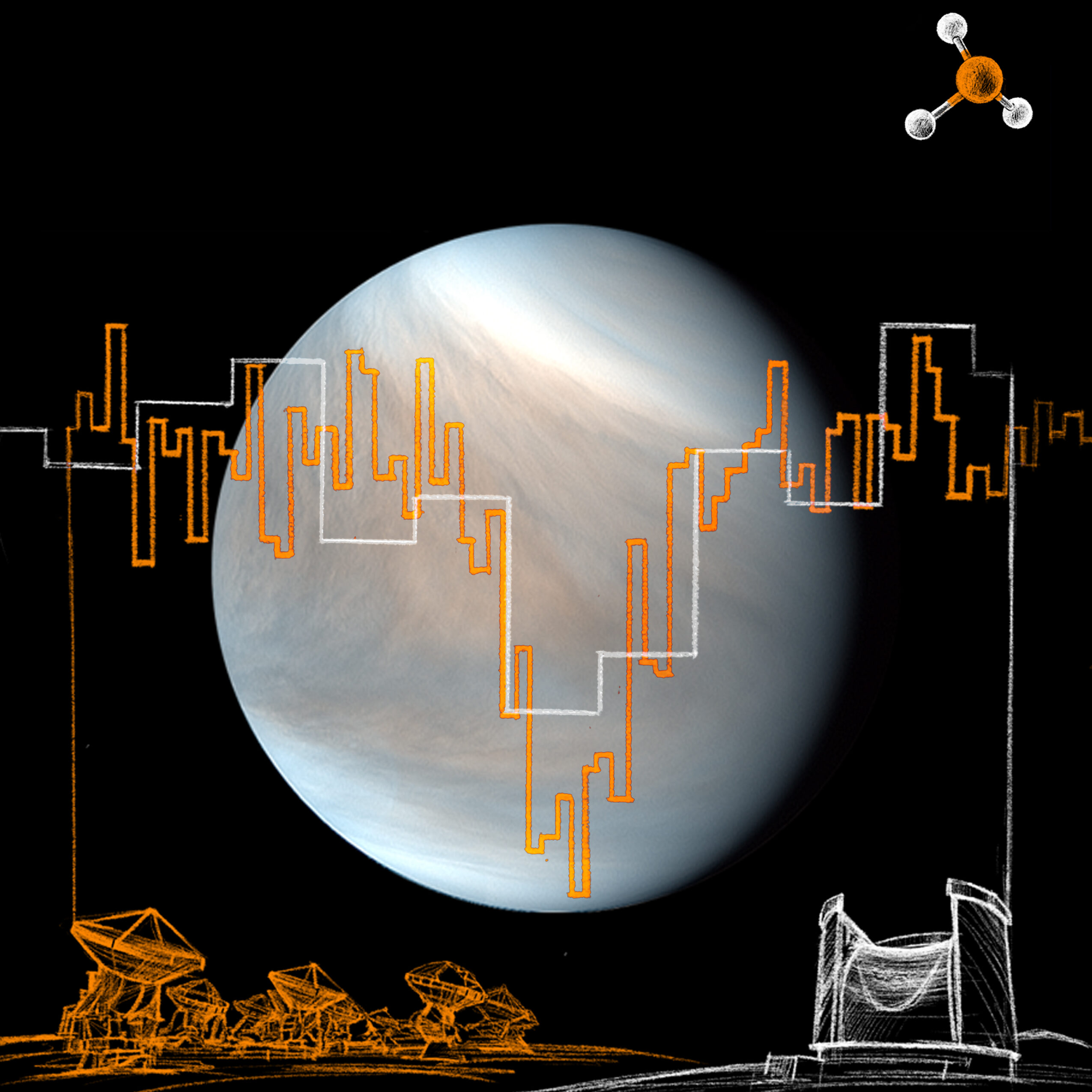The Science Explained

FAQ
September 14, 2020
JCMT finds hints of life on Venus
September 14, 2020Phosphine is an example of a “biomarker”: a molecule that may indicate the presence of life. On the Earth, phosphine is only known to be produced by industrial processes or by microbial life that thrives in oxygen-free environments. Recently, phosphine has been detected in the atmosphere of the planet Venus.
The original detection of phosphine was performed by the James Clerk Maxwell Telescope in Hawaiʻi and a follow-up observation performed by the Atacama Large Millimetre Array in Chile confirmed the result.
The research team performed a detailed analysis on all the different ways phosphine might be produced without life (such as volcanic activity and lightning) but found that all natural processes, together, could only produce 0.01% of the amount of phosphine that the telescopes saw. In contrast, microbial organisms known to exist on the Earth could easily produce many times the observed amount of phosphine in Venus’ atmosphere.
While this detection is promising, further investigation is required to understand the nature of the theoretical microbial life on Venus. Venus’ atmosphere is mostly comprised of carbon dioxide peppered with sulphuric acid droplets. We do not know of any life on the Earth that could survive in these harsh conditions.

Every molecule that exists leaves its own unique “fingerprint” in the light that it touches. Through careful analysis, astronomers can determine what types of molecules have interacted with the light received at telescopes. This image shows the original detection of Phosphine at the James Clerk Maxwell Telescope (Hawaiʻi) overlaid on top of an image of Venus. The “squiggly line” shows the amount of light coming from warm clouds low in the atmosphere of Venus. The large, central dip is caused by Phosphine molecules absorbing the light before it has a chance to reach the Earth. This is the fingerprint of the molecule Phosphine in the clouds of Venus.
Videos
Phosphine on other planets
Phosphine is found on other planets in the solar system but the origin of phosphine is understood to be chemical in these cases (Jupiter and Saturn).
Additional videos
Phosphine detection made with a single pixel camera
The discovery of phosphine was made by an instrument known as RxA that remarkably only has a single pixel.
Additional videos
Jan Greaves – the author leading the search for phosphine
Lead author Jane Greaves discussed the detection of phosphine on Venus and the team of scientist behind the discovery.
Additional videos
- Phosphine, ammonia’s evil cousin
- The hunt for phosphine on exoplanets
- Why use JCMT in the hunt for phosphine on Venus
David L. Clements
Why use JCMT in the hunt for phosphine on Venus
Additional videos
The phosphine result explained
A team of international researchers have discvovered phosphine on Venus, lead author Jane Greaves talks through the discovery and its meaning Credit: Royal Astronomical Society
Additional videos

